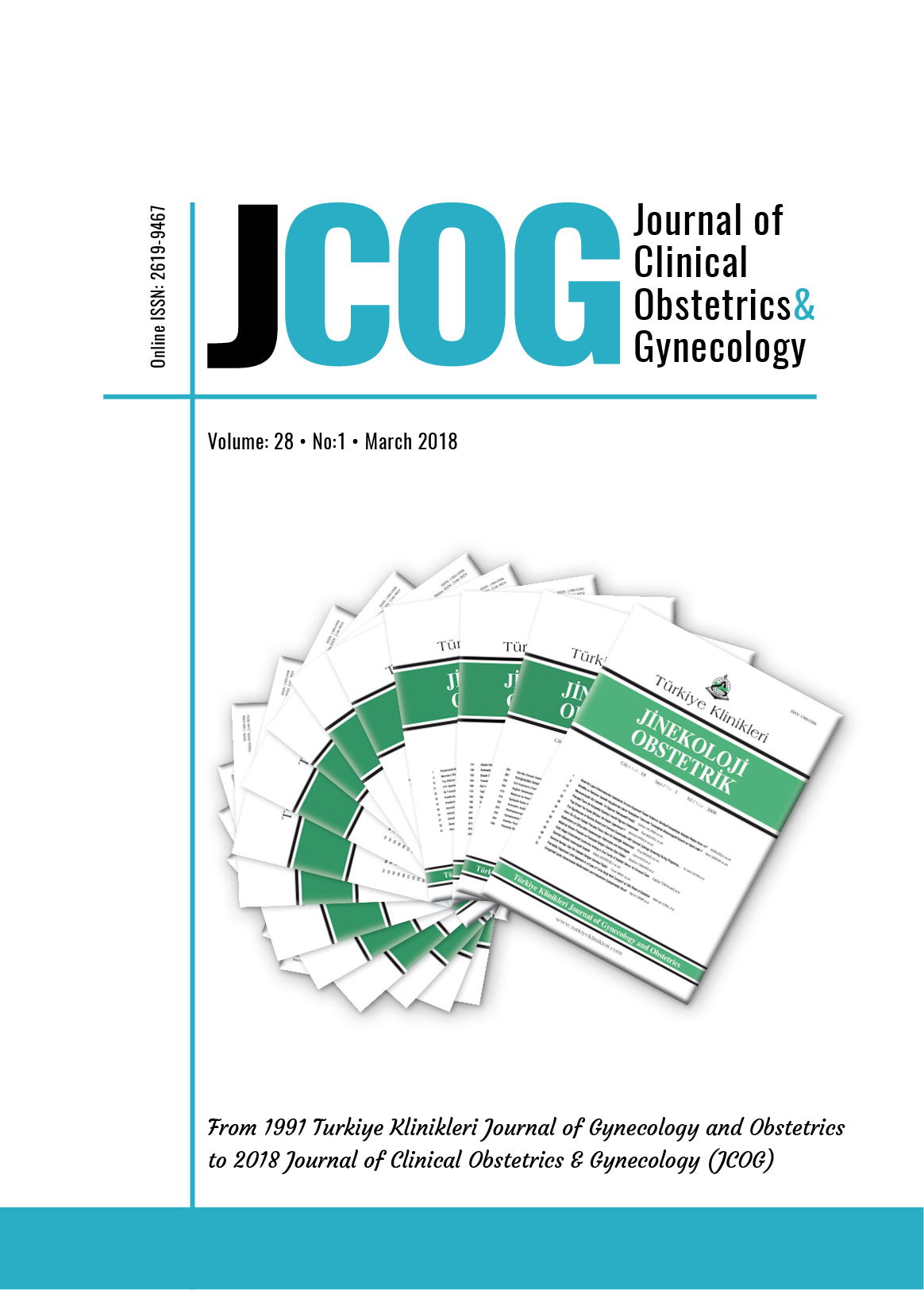Open Access
Peer Reviewed
ORIGINAL RESEARCH
2590 Viewed1525 Downloaded
Oxidative Stress Markers in Tubal Ectopic Pregnancy
J Clin Obstet Gynecol. 2018;28(1):9-13
DOI: 10.5336/jcog.2017-59571
Article Language: EN
Article Language: EN
Copyright Ⓒ 2025 by Türkiye Klinikleri. This is an open access article under the CC BY-NC-ND license (http://creativecommons.org/licenses/by-nc-nd/4.0/)
ABSTRACT
Objective: In this study, a novel automated method was used to evaluate the levels of oxidative stress markers in patients with ectopic tubal pregnancy. Material and Methods: This prospective study investigated 30 patients diagnosed with tubal ectopic pregnancy (patient group), 30 healthy pregnant women in their first trimester (first control group), and 30 healthy women who were not pregnant (second control group). All the participants were admitted to the Department of Obstetrics and Gynecology, Gaziantep University Medical School, Turkey. The Erel method was used to measure the total oxidant level (TOL), total antioxidant capacity (TAC), and oxidative stress index (OSI). Results: TOL and OSI values were significantly higher in the patient group (p =0.001) than in the second control group, while there was no significant difference between the patient group and the first control group. The values for TAC were significantly lower in the patient group (p = 0.001) compared to the second control group; however, there was no significant difference between the patient group and the first control group (p = 0.449). Conclusion: The role of oxidative stress in the etiopathogenesis of tubal ectopic pregnancy warrants more comprehensive studies in the future.
Objective: In this study, a novel automated method was used to evaluate the levels of oxidative stress markers in patients with ectopic tubal pregnancy. Material and Methods: This prospective study investigated 30 patients diagnosed with tubal ectopic pregnancy (patient group), 30 healthy pregnant women in their first trimester (first control group), and 30 healthy women who were not pregnant (second control group). All the participants were admitted to the Department of Obstetrics and Gynecology, Gaziantep University Medical School, Turkey. The Erel method was used to measure the total oxidant level (TOL), total antioxidant capacity (TAC), and oxidative stress index (OSI). Results: TOL and OSI values were significantly higher in the patient group (p =0.001) than in the second control group, while there was no significant difference between the patient group and the first control group. The values for TAC were significantly lower in the patient group (p = 0.001) compared to the second control group; however, there was no significant difference between the patient group and the first control group (p = 0.449). Conclusion: The role of oxidative stress in the etiopathogenesis of tubal ectopic pregnancy warrants more comprehensive studies in the future.
MENU
POPULAR ARTICLES
MOST DOWNLOADED ARTICLES





This journal is licensed under a Creative Commons Attribution-NonCommercial-NoDerivatives 4.0 International License.










